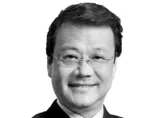How smart cities will help Singapore deal with tackling energy demands
By Jason GohIn the last decade, Singapore’s population has grown by 25 percent and this number will continue to grow for another ten years. With this rapid pace of growth coupled with the impending demand that follows, it comes as no surprise when a recent study by Shell Eastern Petroleum showed that four out of five Singaporeans surveyed ranked future energy needs as important as cost of living, job security, and housing affordability1.
The rising need for energy in Singapore has become an increasing concern for the populace, and businesses too. There has been ongoing discussion, within the parliament as well as on the ground, and the introduction of government regulatory policies like the new Energy Conservation Act (ECA), on meeting the energy challenges of Singapore’s growing population.
It is well worth noting that this trend goes beyond just Singapore and also applies to many other developing countries in Asia which have growing populations due to increasing urbanisation and exploding birth rates.
While a mix of alternative energy sources like solar and wind is commonly highlighted as one of the solutions that could help to meet future energy demand, we believe that strategic and efficient use of energy can take any city to a more sustainable future, and this is particularly so for Singapore.
There’s now a more urgent need to advocate, from businesses all the way down to the household level, the smarter use of energy that will in the long run ensure enough energy for the needs of all.
In a nutshell, we believe that Singapore needs to evolve into a smart city in order to meet the energy demands which will be placed on the country’s infrastructure by a growing population.
A smart city is one which has interconnected systems that are able to work with each other, sharing information that makes a city more efficient, and at the same time more environmentally friendly and sustainable. And not only does this occur on a systemic level – e.g. systems like transportation networks sharing information with communication networks for better traffic management – but it goes all the way down to the individual level, where people are sharing data from facets of their daily life with systems and organisations.
So how would a smart city help alleviate energy concerns? Well, making all the various systems in a city work together creates a critical mass of data that allows for continuous improvement of the systems themselves.
Achieving this integration does more than just improve operations. Improving and connecting systems delivers a tremendous volume of information which can be analysed by intelligent software systems.
This data analysis will allow cities to develop actionable information that can be used to deliver more efficient public services. The efficiencies achieved though this integration will result in energy savings.
Another area which will see energy savings is through the development of smart energy grids. Smart energy grids are able to efficiently balance supply and demand.
In contrast to today’s energy grid, which functions mainly in a top-down manner, the smart grid will be bi-directional as electricity flows into homes and offices as well as out of them. The smart grid will have the capability for electricity demand and supply to interact intelligently, and integrate intermittent renewable generation.
The smart grid will also give consumers and businesses a better understanding of their energy consumption, which allows them to adjust their energy demand to moments when prices and demand are at their lowest, thus creating considerable energy savings.
However, for the smart grid to work, collaboration – between businesses, utilities, consumers, and governments – will be key. The importance of collaboration is down to the fact that there can be no smart grid until all parties connected to the grid are smart grid ready.
Each party will need to play their part in sustaining the smart grid, as the grid will function in a bi-directional manner which blurs the roles between supplier and consumer.
As the world wonders how to meet the growing demand for energy and resources, while needing to reduce global carbon emissions, one thing is clear – the energy challenge will be won or lost in cities.
1Source: https://www.shell.com.sg/aboutshell/media-centre/news-and-media-releases/2013-media-releases/shell-singapore-futureof-energy-survey-20130531.html




















 Advertise
Advertise







